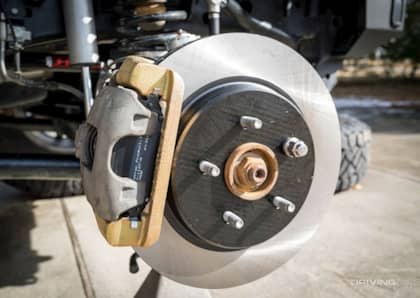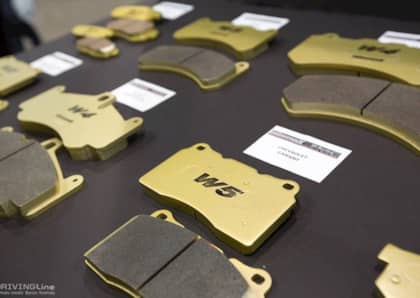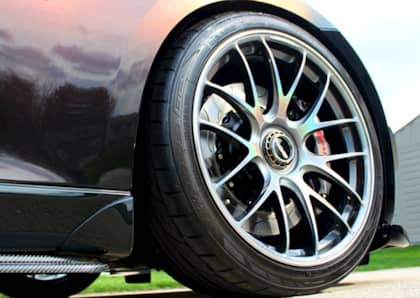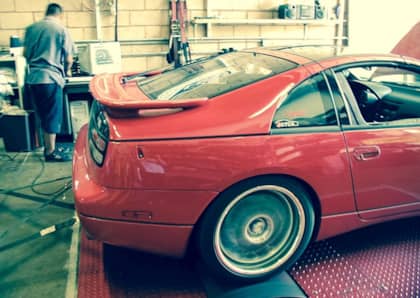Budget Braking Improvements: Upgrade Your Stopping Power 101
As you begin your motorsports journey one of the most cost-effective modifications you can make to your vehicle of choice is improving the braking system. Aside from tires, you won't see a better return on your investment than when carefully considering each of your brake components and then selecting the upgrade that is most appropriate to your particular brand of performance driving. This is true whether you're road course racing or dodging cones at autocross—and as an added bonus, several of these updates will also have a positive effect when driven in a street setting.
Let's take a look at each aspect of your vehicle's braking system to see how it can be taken to the next level, what the relative costs are and why you should consider it.
Pads
Moving from standard street pads to a performance-oriented set can have a dramatic effect on your vehicle's braking. Best of all, you can install a set of better pads without the need for any other supporting mods and start seeing benefits almost immediately.
Most stock brake pads are made from materials (known as organics) that are forced to balance stopping power with longevity, low noise, and reduced amounts of dust. Although stepping up to a ceramic pad will add a greater degree of heat resistance without significantly increasing noise or dust, they're more of an interim step.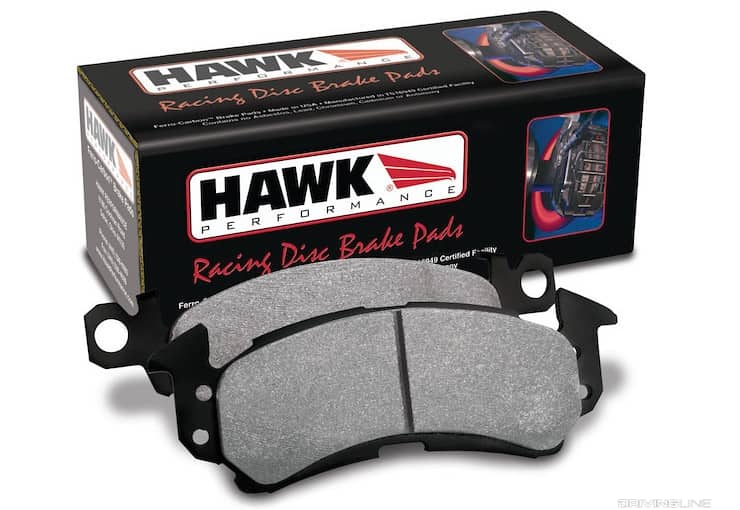
For competitive driving you want a semi-metallic brake pad material (which adds in steel or iron on top of the kevlar, carbon, and other fibers in organics), which will bite your brake rotors harder, better resist the 'fade' effect found at high temperatures in ceramics and organics, and wear more slowly when used hard. They will of course be dustier and squeal louder than a less aggressive material. From here you can also look at ferro-carbon or carbon fiber based pads, which provide variations on the semi-metallic design.
Keep in mind that the more aggressive a pad you choose, the more likely it will need to be warmed up before providing maximum bite and stopping capability. A track-oriented pad won't be safe to run on the street as temperatures will never rise to the level needed to ensure predictable braking.
Rotors
Brake rotors also offer you a number of variants to choose from, although their benefits are somewhat harder to quantify. Typically, the larger the rotor, the better it will manage heat and the more surface area it will offer for the pad to grip, but swapping on larger discs is outside the scope of this introductory guide, so we're going to focus instead on different types of rotors available.
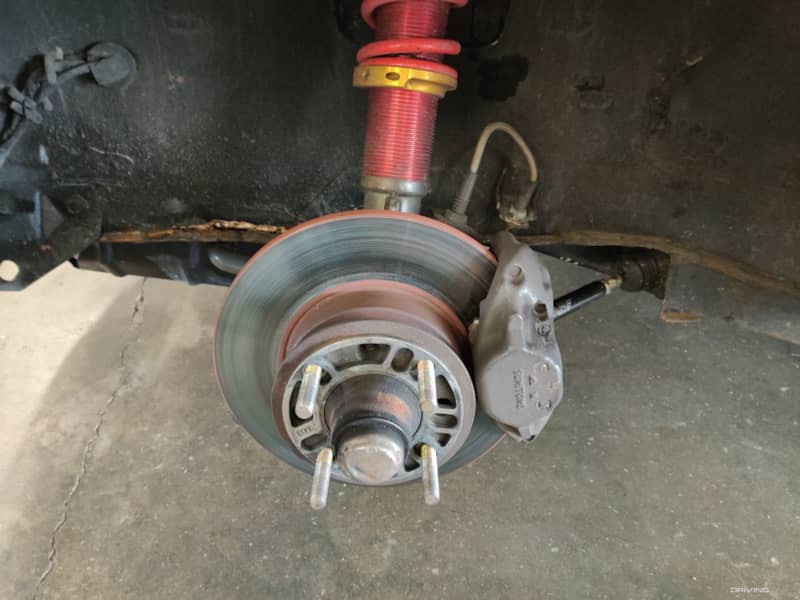
The stock steel blanks that come with almost every car (and in a performance vehicle, they are likely designed to provide at least a modicum of cooling) are typically a good choice in a performance setting. They are strong, and easy on brake pad wear, which can extend the life of your pads over the course of a track day.
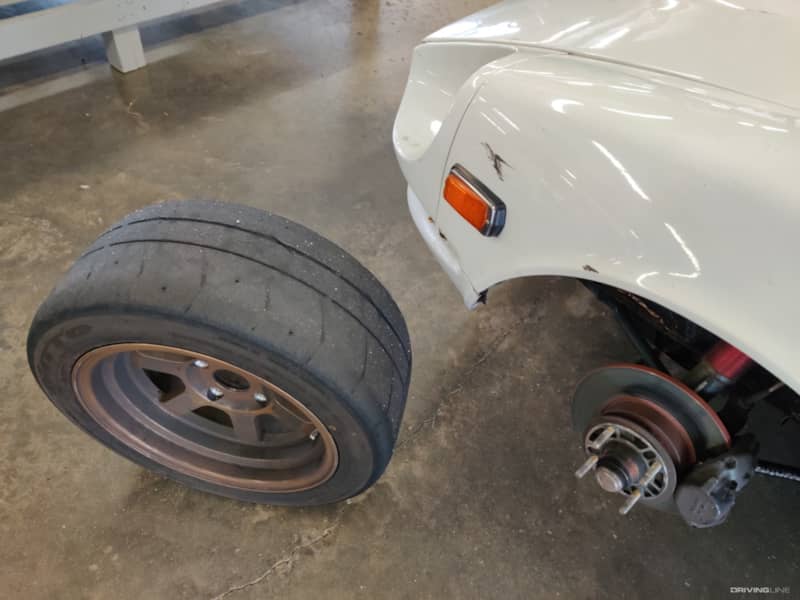
The two primary variants you will find on the market include slotted discs and drilled discs. The former makes use of slots carved into the rotor itself, while the latter features holes drilled completely through the disc. Why make these incisions? Slotted designs are intended to 'shave' a brake pad in order to remove any glazed areas and expose as much fresh friction material as possible, while also channeling way any gases or heat produced while braking. Drilled discs are also meant to improve cooling, and can help brakes dry quicker when driving in a wet environment. Some rotors even come both slotted and drilled to combine these two elements.
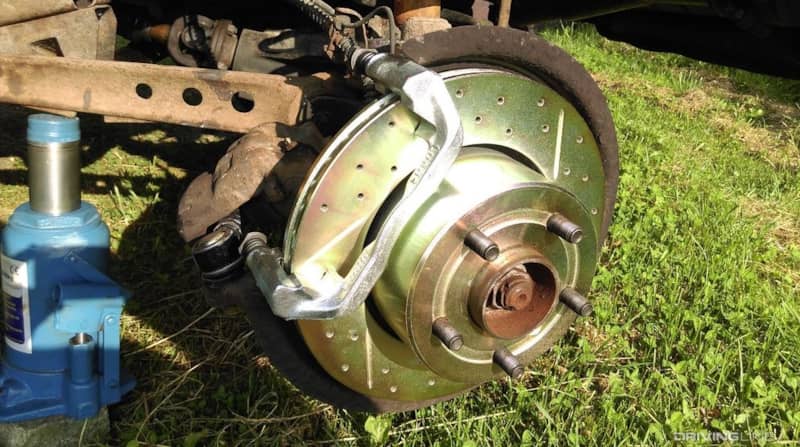
Predictably, removing material from a rotor by drilling or slotting weakens it in the long term, and when driven hard it these types of discs car crack, which can lead to premature failure at speed. For this reason, drilled rotors generally aren't safe for motorsports. Slotted rotors are stronger, but they do a number on your pads, chewing them up much more quickly than a smooth rotor would, and the jury is out as to whether the performance benefit is worth the consumables cost.
If you've got a generous budget, you may also want to consider carbon ceramic discs, which are made from a carbon fiber composite material. Almost impossible to crack, and lighter than steel, they manage heat very well, even when racing for hours at a time. That being said, they're expensive, and aren't typically the best choice for street driving due to their less precise pedal feel and lessened "bite" at colder temperatures.
Brake Fluid
If you're generating more heat in your braking system because you're hauling the car down from high speeds lap after lap, or even because you've upgraded your pads and rotors and now the forces being generated are greater than stock even at autocross, you'll want to consider switching to a better-performing brake fluid.
Brake fluid is the heart of your braking system, but a stock fluid is only intended to resist the type of heat that results from street driving. It was never intended to deal with the equivalent of repeated emergency stops, which is roughly what competition-level braking amounts to. If it boils, the gas introduced into your brake lines will reduce stopping power considerably.
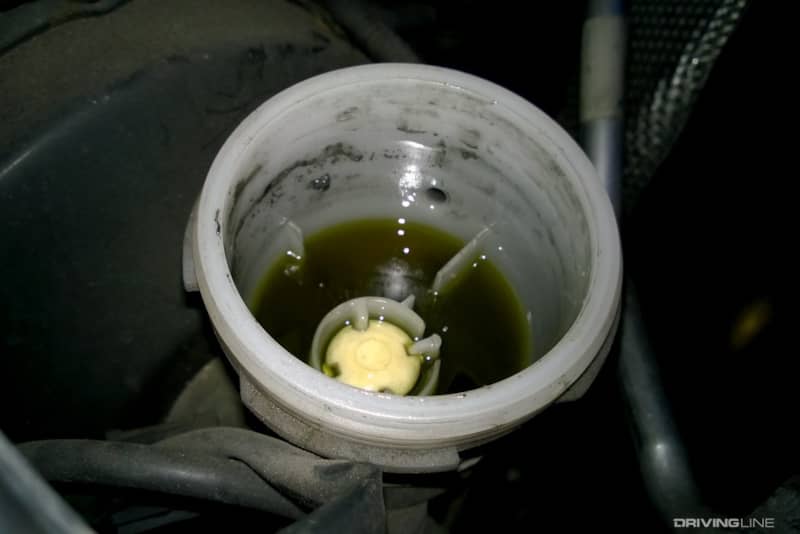
Brake fluids are sold with DOT coding (3, 4, or 5.1). From a performance perspective, DOT 4 typically offers the best heat resistance, but it's all down to the individual make-up of that fluid itself. You'll want to look at the dry and wet boiling points of a fluid before making your purchase decision. Since all DOT 3 and DOT 4 fluids absorb water from the atmosphere, the 'wet' boiling point refers to its heat resistance after it's been exposed to moisture after a significant period of use, while 'dry' speaks to its resistance right out of the bottle.
Street braking fluids typically have a dry boiling point of no more than 518 degrees, with some dipping as low as the 400 degree range. Track-ready fluids boost that number to 600 degrees at a minimum, with some brushing up against the 650 degree mark. This offers much more protection, and unless you go for a top-shelf formulation (such as Castrol SRF), it won't cost you all that significantly more than a stock brake fluid.
Stainless Steel Lines
A key aspect of keeping your pedal feeling solid after upgrading to a better brake fluid is to switch from standard rubber lines to stainless steel lines. Simple physics tells us why: a pressurized fluid running through a rubber line is going to flex the outside of that tube, which will result in a softer pedal and less immediate response. A stainless steel line won't flex whatsoever and it will also manage heat much better than rubber, helping it to last longer.
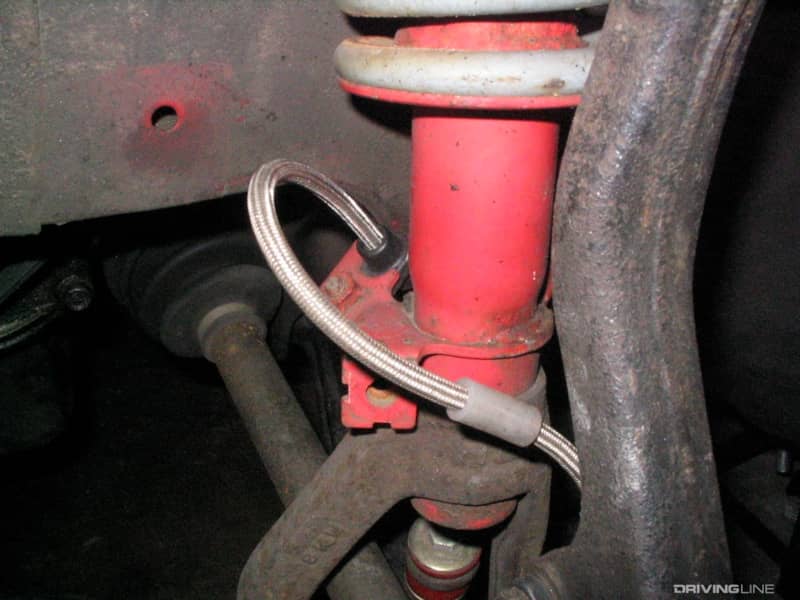
There's really only one reason why your vehicle has rubber brake lines from the factory, and that's cost—they are cheaper to install, and if you're a company building hundreds of thousands of cars and trucks, even a small price savings adds up quickly. Aftermarket stainless steel lines are a relatively inexpensive update that will pay dividends in high performance driving.
Cooling
Those temperatures listed above for brake fluid should give you an idea of just how red-hot your pads, discs, calipers can get on a race track. Anything you can do to improve the cooling of your braking is going to pay dividends in terms of improving responsiveness, stopping capability and longevity.
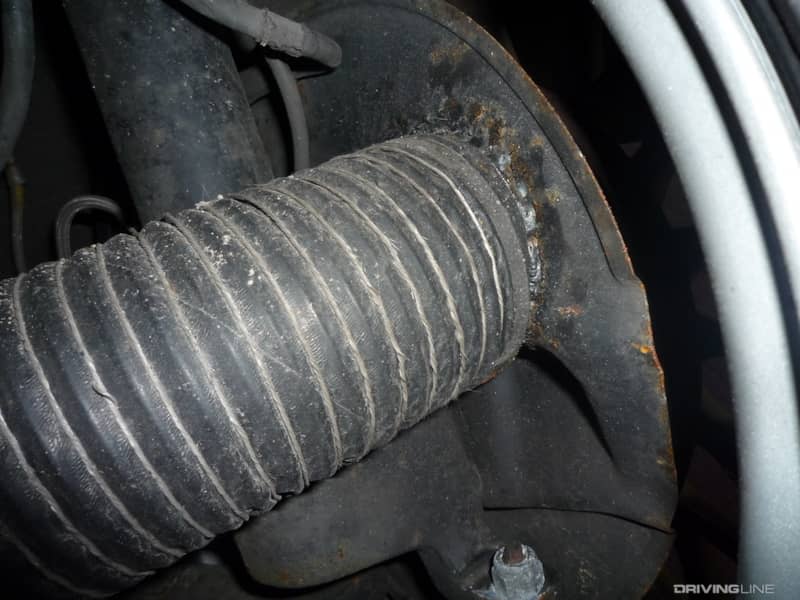
Some performance cars come with ducting that directs air towards the hottest parts of the braking system, but even if yours doesn't it's easy to build your own system using basic tubing and brackets that you can find at your local hardware store. No one's going to see what it looks like behind the wheel, and as long as it's secured carefully a homemade cooling system that pulls air from the front of the car can go a long way towards dropping temperatures.
Calipers
Calipers are the metal mitts that grip your brake pads and force them against the rotor when you push your pedal to the floor. Their 'fingers' are called pistons, as these are the elements that expand and contract in contact with the pads themselves. The more pistons a caliper has, the better it is able to manage heat and evenly distribute braking force across a pad and rotor. You'll find calipers ranging from single all the way up to six pistons when looking at aftermarket and factory replacements.
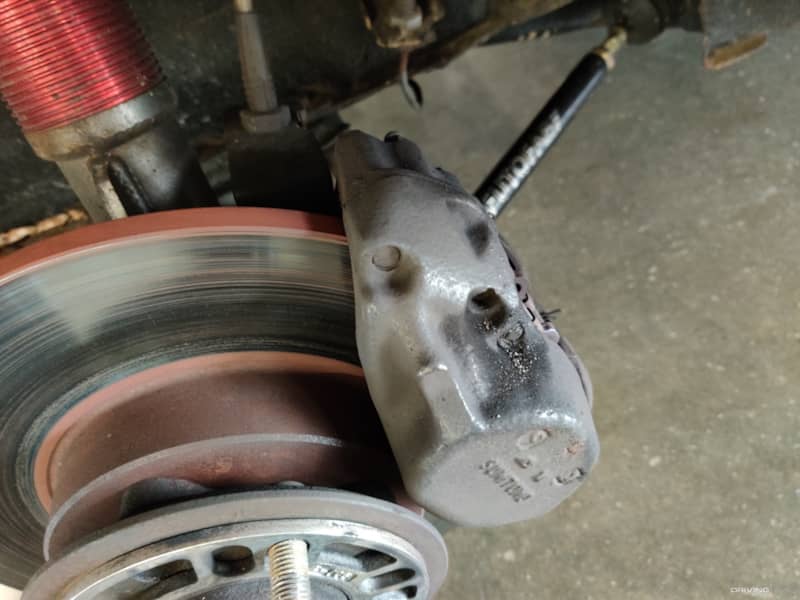
Upgrading brake calipers is something of a sticky wicket. As mentioned earlier when discussing larger brake rotors, this job can sometimes be quite demanding, as you must ensure that the new calipers and rotors fit together properly, and that there is enough clearance between the brakes and the suspension for everything to operate safely.
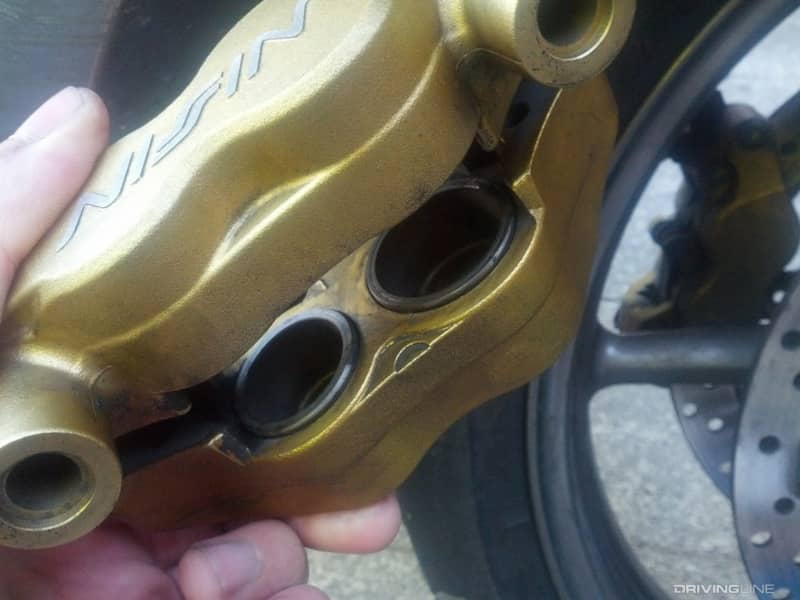
In some cases, however, larger calipers can be more easily installed on a vehicle because of shared components with another model. In these cases you may be looking at a plug-and-play solution for your braking system.
Master Cylinder
If you do make upgrades to your calipers, you may need to match your master cylinder's capabilities to the increased amount of fluid and pressure that may be necessary.
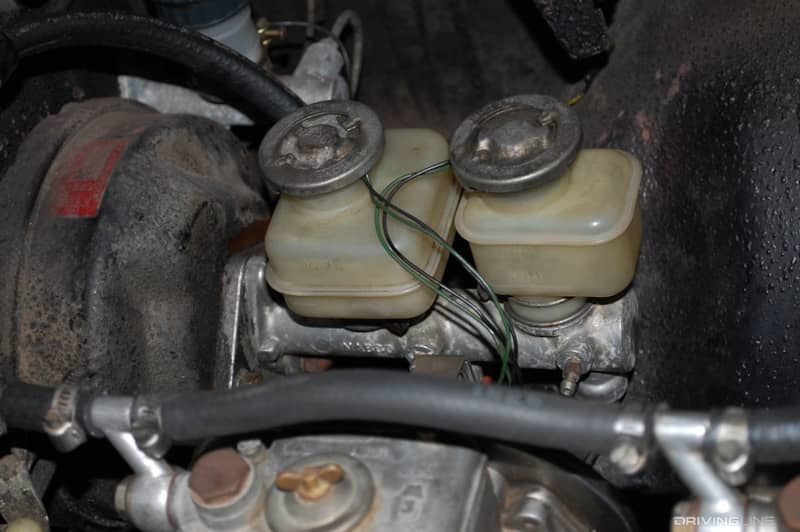
At this point, you'll be calculating the weight of your vehicle, its typical speed in a competitive environment, the grip level of the tires that are being used, and the pads and discs that are installed. All of these factors will feed in to choosing a master cylinder upgrade that offers the line pressure and balance you want from your brakes. It can be a complicated equation, so it's worth tagging in a pro to get a full understanding of what you can achieve with your current setup and what your expectations are on the track.
More From Driving Line
- What can you expect in terms of maintenance and repairs after a typical track season? Check out this feature on the costs of racing a vintage car.




